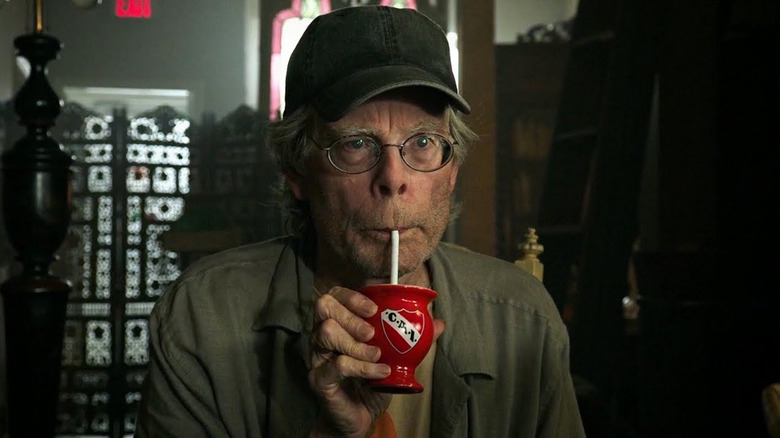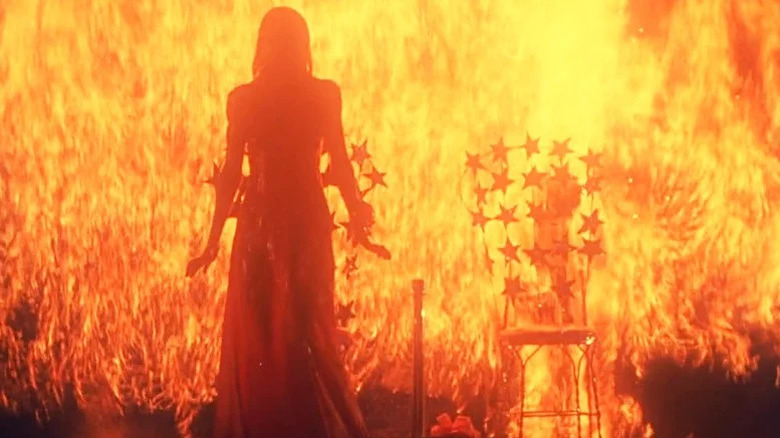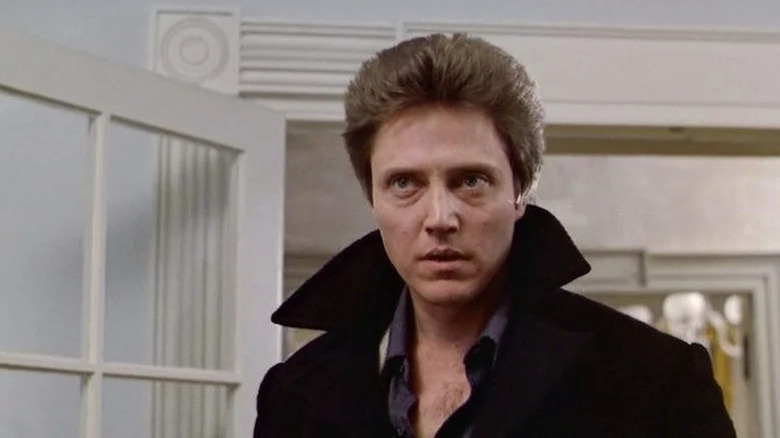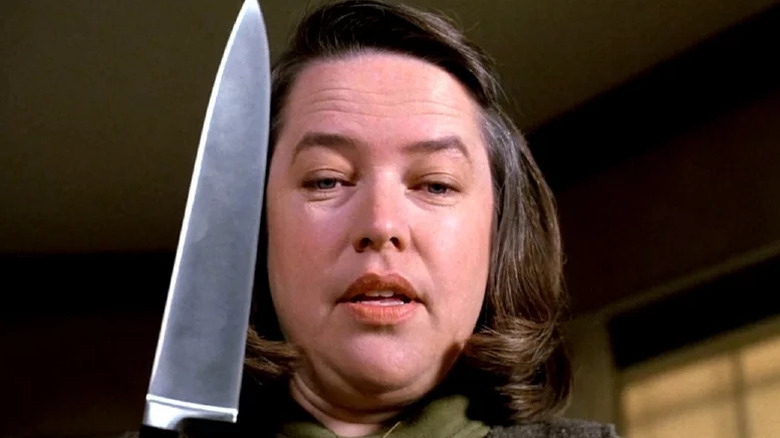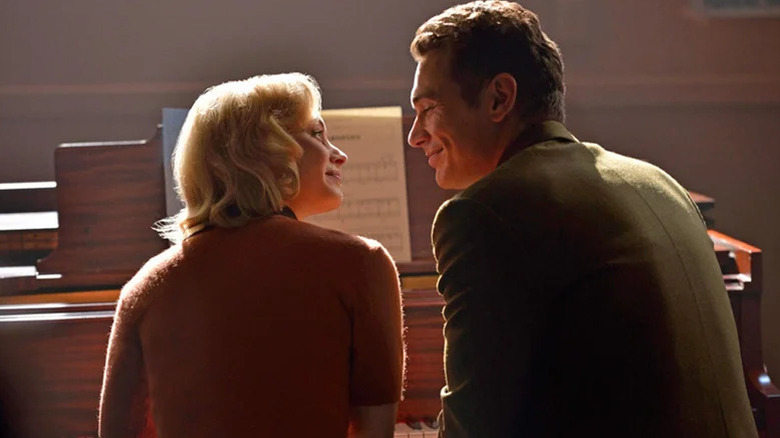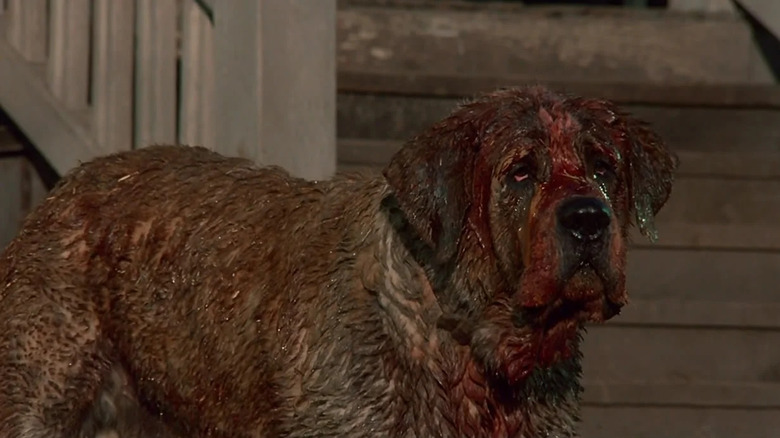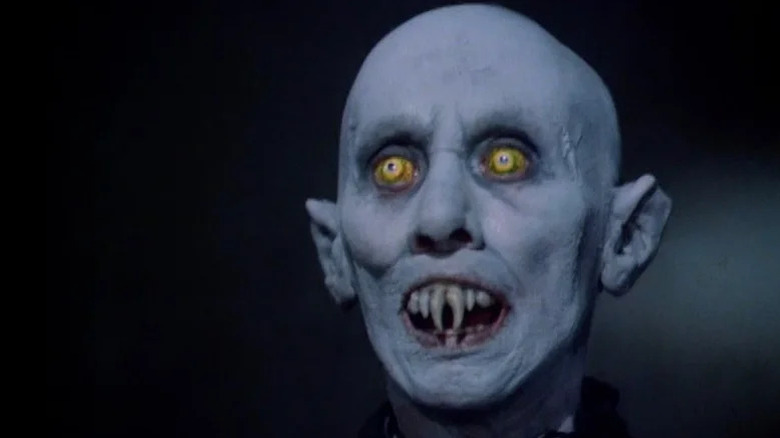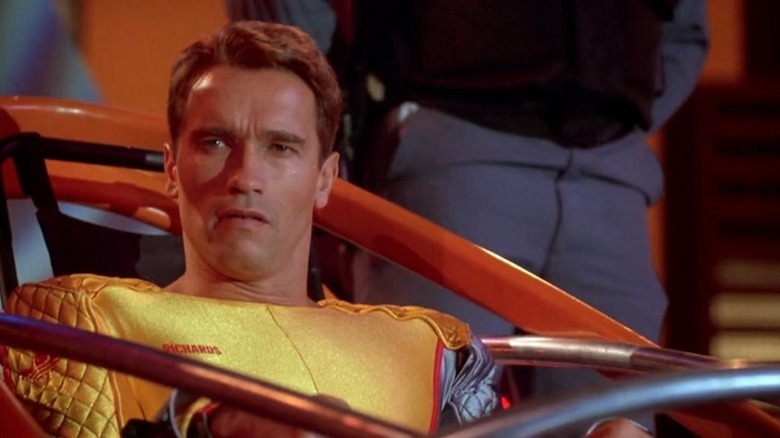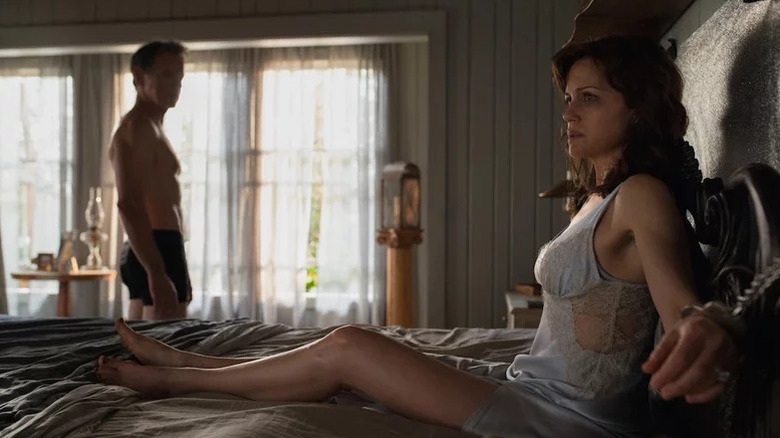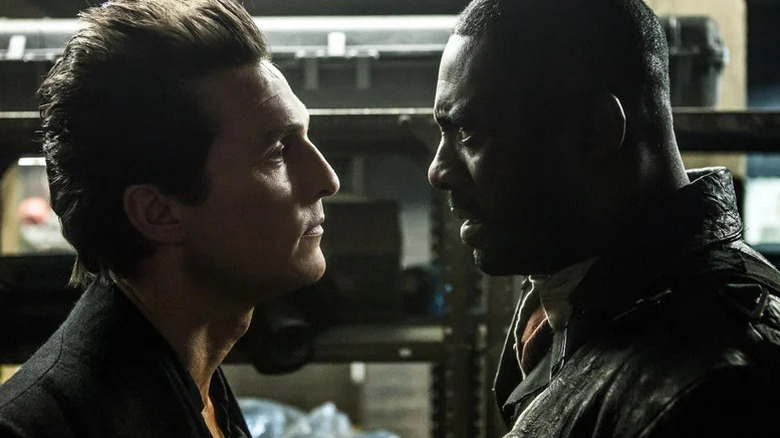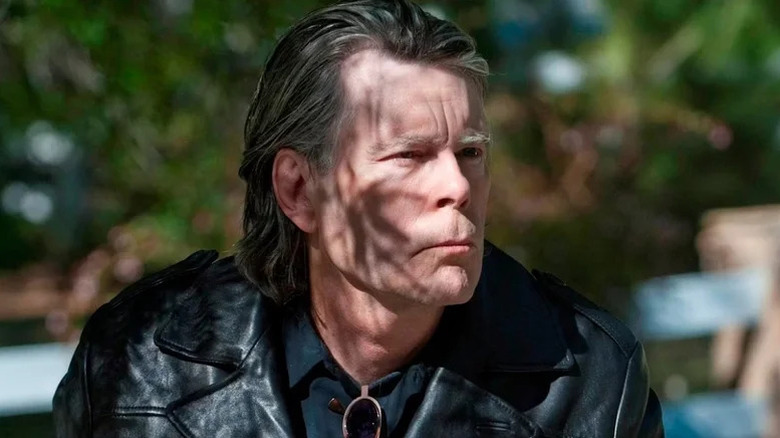The 10 Best Stephen King Book Endings, Ranked
Most people who have read a book or two are well aware that Stephen King is the reigning ruler of the horror genre and a capable contender in several other areas of literature. Still, even his most ardent fans are likely quick to admit that King's endings have a reputation for disappointment. His longer works, in particular, tend to spend so much effort on world-building and intricate plot-weaving that the creative juice seems to run out when it's time to stick the landing.
As a result, King's stories can remind the reader of that meme where a hyperrealistic drawing of a horse gets progressively worse until the tail end is just a doodle. Consider, say, "Under the Dome" (2009), one of the author's patented "small town in a predicament" stories ... only, one that ends with the revelation that the whole nail-biting plot was caused by some alien kids goofing off.
Still, King is so massively prolific that he's also written plenty of stories where the ending is absolutely stellar. Here's a look at 10 of his best ones.
10. Carrie (1974)
It's probably not a surprise that "Carrie" makes an appearance on a /Film list of Stephen King endings. After all, Brian De Palma's 1976 movie has plenty of memorable moments, and the unleashed feminine rage of its ending is rife with symbolism and impressive imagery. The humiliation and the ensuing bloody fury of the prom sequence and the fiery purge of the whole town are impressive, but it's worth remembering that the original work manages to pack its own emotional punch without access to the visceral visuals the film does so well.
The closing of "Carrie" the novel plays out in a similar way as the film, but after Carrie returns home and kills her mother in self-defense, she doesn't self-destruct with the house afterward. Instead, the book version of Carrie leaves the scene to encounter the bullying Chris and Billy, causing their car to crash after they attempt to run her over (a sequence that takes place before Carrie's confrontation with her mother in the film). After this final show of power, Carrie has a dying telepathic heart-to-heart with fellow student Sue Snell and learns that Sue and her now dead boyfriend Tommy were not involved in the prom night prank.
This eliminates the need for a final scare like the famous "hand from the grave" moment in the movie, as Carrie and Sue are on good terms when the former dies. However, King ends his story with a concerning promise of the future: The end of the book confirms that there are many people like Carrie out there, which implies that versions of the novel's events have the potential to repeat ad infinitum, all over the world.
9. The Dead Zone (1979)
Leave it to Stephen King to create a positive ending around the premise of the accidental near-murder of a child. This is exactly what happens in the 1979 novel "The Dead Zone," which film buffs may remember for the brilliant 1983 David Cronenberg movie adaptation, starring Christopher Walken as protagonist Johnny Smith.
The basic premise of "The Dead Zone" is simple and exciting: Long-comatose Johnny wakes up after five years and discovers he can see people's futures via physical contact, which inevitably leads to some truly horrible people entering the fray. A dangerous serial killer known as the Castle Rock Strangler isn't a bad enough villain to end the book with, though. Instead, Smith's ultimate mission is to deal with an even more terrifying glimpse into the future — Greg Stilson, a deranged rising politician who the novel has followed for some time as a B-plot. Stillson's ultimate destiny is to become the President and cause a nuclear apocalypse, as Johnny's clairvoyance reveals to his shock.
Reluctantly, Johnny comes to understand that his only shot at preventing a global disaster is a literal gunshot. However, his career as a wannabe assassin is cut short when Stillson, ever devoid of a moral compass, instinctively picks up a small child and uses the kid as a human shield, foiling Johnny's attempts. Johnny dies from the bodyguards' bullets but realizes that photos of Stilson covering behind the kid will destroy the man's reputation and career. Mission accomplished, Stephen King style.
8. Misery
Another Stephen King story where a stellar movie adaptation is the best-known version of the story, the novel "Misery" (1987) exists in the shadow of Rob Reiner's 1990 film of the same name — not least because of Kathy Bates' Academy Award-winning performance as the injured writer Paul Sheldon's (James Caan) captor, deranged superfan Annie Wilkes. However, the novel — unlike Paul for much of its events — manages to stand on its own legs, presenting a quality story with a quality ending.
The main plot of "Misery" ends in a fairly straightforward manner, as Paul finally manages to gather enough strength to fight against the increasingly horror villain-like Annie and make his escape. What makes it special is what happens after the climactic final confrontation is over. Unlike in the movie, where Paul manages to kill Annie after a prolonged fight, the book version of Paul learns that she was determined to make a comeback and slay Paul — with a chainsaw, no less. Fortunately, Paul only finds this out after the fact since Annie is no superhuman fiend, and thus died of her injuries before reaching him.
It's what comes next that's the real ending — and the real kicker. While Paul does physically somewhat recover from his ordeal, the trauma of captivity has left deep scars that may never heal. Paul's personal life is crumbling, and he's dealing with addiction issues, and his only consolation is that his writer's block seems to be on the way out. With this, "Misery" the novel concludes with an all too realistic postscript to a survivor story — the immediate danger might go away, but the damage it has caused continues to affect the victim long afterwards.
7. 11/22/63 (2011)
Jake Epping can travel in time, and he wants to stop several wrongdoings — including the assassination of John F. Kennedy on November 22, 1963. Unfortunately, he has to do so in a novel written by Stephen King, which complicates matters somewhat.
Jake's attempts to meddle with past events under his "time slip" traveling method's set rules prove difficult. While he succeeds in some missions and even falls for a librarian called Sadie Dunhill, his actions soon have unexpected repercussions both in his native year 2011 and in the past. Near the end of the novel, he learns that changing the past creates alternate timelines, which puts the very fabric of reality at risk ... and has turned his year 2011 into a dystopian hellscape.
Ultimately, Jake has no option but to undo and abandon years of life and love in the past, simply to reset his own time. After achieving little more than maintaining the status quo, his sole connection to his life in the past is a brief meeting with an elderly Sadie, who has lived a happy and full life without him. The dance Jake manages to steal during a party held in Sadie's honor acts as a bittersweet and touching ending, and it also illustrates the futility of the protagonist's efforts and the emptiness he now has to deal with. He didn't really save the future as much as he fixed his own mistakes — and in doing so, he lost an entire happy life he could have had in the past.
6. Cujo (1981)
Even a casual Stephen King fan who has never actually read "Cujo" (1981) might know that a dog dies in the end. However, finding out that the writer has no problems killing off both a kind but disease-ridden dog and a wholly innocent child to wrap up a novel is truly something else.
The story of Donna Trenton and his four-year-old son Tad trying to survive the increasingly dangerous attacks of the titular rabid Saint Bernhard may seem like a fairly cookie-cutter thriller tale until its very end. That's when the bloodthirsty Cujo finally dies at the hands of the desperate Donna, which is nasty enough in itself. However, the fact that young Tad finally succumbs to thirst and heatstroke while Donna and Cujo are duking it out is a true gut punch.
Many writers would use the child's consistently weakening state as he and Donna are trapped in the car Cujo is stalking as a narrative device — an easy way to raise the stakes, but little else. King, however, isn't playing. Unwaveringly, mercilessly, the author follows poor Tad's arc to its natural conclusion. It's a sad death, but one that plays an important part in elevating "Cujo" above the literary animal attack rabble. Oh, and as an extra blow to the reader, King takes utter care to remind the reader that Cujo was a victim too — a truly innocent, lovable pet that was just unfortunate enough to contract rabies from a bat bite and lose its faculties. Ouch.
5. Salem's Lot (1975)
There's just something about a nice little positive twist at the end of a captivating horror story. Stephen King doesn't always dabble in such things, but "Salem's Lot" (1975) is a good example of the author offering a potential way to fully vanquish the beast.
The novel's "Dracula"-style arrival of ancient blood-sucker Kurt Barlow and his human familiar combines classic vampire fiction with King's beloved small-town themes. Predictably enough, things escalate to a point where only a handful of people survive the vampire takeover of Jerusalem's Lot. At the very end of the novel, however, protagonist writer Ben Mears and fellow survivor Mark Petrie decide to put an end to the story by returning to 'Salem's Lot ... with the full intent of torching the place and the surrounding areas like proper monster hunters.
Granted, this isn't the overall end for "Salem's Lot," as parts of King's "The Dark Tower" saga offer some insight into central antagonist Barlow and the novel's place in the larger narrative. Still, the way the book's prologue and epilogue conspire to turn the tables on the vampires is a nice and almost positive ending, as King's stories go.
4. The Running Man (1982)
If you've seen the entertaining but thoroughly inaccurate 1987 movie adaptation starring Arnold Schwarzenegger, you might have a very wrong idea of what "The Running Man" is about. Though the 1982 novel's protagonist is also called Ben Richards and he competes in a deadly game show, don't expect to see muscle-bound men in yellow jumpsuits fighting chainsaw-wielding gladiators. No, the novel — published under King's Richard Bachman pseudonym — is a big ol' critique of a capitalist world that has been taken to its failed extreme.
The book version of Ben is poor and so desperate that he's willing to be hunted for sport by elite hitmen in the titular reality show, where the playground is the entire world, and he has to record regular video messages as proof of his ongoing participation. Ben plays well, surviving a record time and becoming the symbol of the oppressed masses. Producer Damon Killian eventually tries to rule him to the side of the regime as the show's lead hunter and de facto star. Instead, after learning that his ailing family (who were his sole reason to participate) has died, a desperate and vengeful Ben flies a plane into the TV network's headquarters.
In a post-9/11 world, of course, the plane ending hits very differently than it did when the book came out in 1982. Still, King's depiction of a world that uses complex and violent reality shows to keep increasingly impoverished masses complacent while the elites grow fat is chillingly prescient, and the end of Ben's struggle in an impossible-to-survive scenario is as memorable and as effective as endings come. It will be interesting to see what Edgar Wright's Glen Powell-starring "The Running Man" remake will make of the novel's hopeless depiction of the far-future year of, uh, 2025.
3. Gerald's Game (1992)
As premises go, "Gerald's Game" has many other psychological horror novels beat. The bulk of the story happens at a remote cabin, where Jessie and Gerald Burlingame are engaging in BDSM. Gerald becomes abusive, and Jessie fights back, causing Gerald to die of a heart attack. All of this is problematic, but there's an even worse, more immediate issue: Jessie is now alone, handcuffed to the bed, and has no idea when — or if — anyone will find her.
Jessie's fear of a cruel, impending death leads her to hallucinate a number of increasingly strange voices and sights, as several escape attempts fail and her condition weakens. One of her hallucinations, "Space Cowboy," is a large shadowy figure she suspects is a representation of his father. However, other hallucinations seem genuinely concerned when it enters the scene and it seems to be interacting with Jessie in ways that make her think that they might not be entirely imagined.
King weaves the story in a way where it's never entirely clear just what's happening and how much of it is inside Jessie's head or not ... until the very end. After finally managing to escape her predicament, Jessie learns that a serial killer called Raymond Andrew Joubert had been operating in the area. She faces Joubert during his trial, and when the killer quotes her bed-bound ramblings at her, she truly understands that the supposedly imaginary Space Cowboy was a real physical threat all along. The confrontation is ultimately a cathartic moment for Jessie as it helps her to deal with her past, but the revelation that the novel's running theme of abusive men extends to a monstrous killer observing her perilous situation for his own nefarious reasons is a true whammy.
2. The Dark Tower VII: The Dark Tower (2004)
"The man in black fled across the desert, and the gunslinger followed."
The chronological conclusion of "The Dark Tower" series — such as it is — ends with the gunslinger Roland Deschain finally reaching his destination, the Dark Tower. It turns out to be just about as impressive as the lengthy series has dared to suggest thus far — to be precise, the tower is the physical body of this universe's god, Gan. Unfortunately, Gan isn't happy with Roland, who's done some pretty awful things in his life. His reaction to the gunslinger's wrongs is to send Roland back to the beginning of the very first book in the series, "The Dark Tower: The Gunslinger" (1982).
Just like that, the ending reveals that the entire series has been part of Roland's purgatory as one of his countless journeys to the Dark Tower in order to eventually redeem himself. With that, the iconic first line in the series also becomes its last one: The man in black will forever flee across the desert, and the gunslinger will always follow. The sole hint of a happier ending comes in the form of the revelation that Roland's cycles aren't entirely identical, which gives hope that his Groundhog Day loop can one day be broken.
Swooping, complex, and long by even Stephen King's lofty standards, "The Dark Tower" series got so big that it seemed almost impossible that he would stick the landing. Yet, by ending the series the exact same way it started — well, almost exact, thanks to a very particular horn that may or may not help Roland change things this time around — King managed to create the rarest of all things: a near-perfect ending.
1. Revival (2014)
"Revival" (2014) is so compelling that Mike Flanagan has regretted not directing an adaptation. In it, two men called Jacobs and Jamie join forces thanks to their mutual interest in conquering death. They attempt to achieve this by manipulating secret and strange energies that Jacobs, the older of the pair, has discovered. He's already figured out to use the energies for healing, and expects to be able to resurrect his dead wife and offer humanity a glimpse of Heaven itself.
While they succeed and get a look at the things that await humanity after death, they unfortunately find out that even Hell might be preferable to where every single dead person actually ends up. As it turns out, the afterlife — the only afterlife, regardless of how good you are or what you believe in — is a brutal dimension of darkness known as the Null. Every single person you can imagine is destined to spend an eternity in this sunless place, which is presided over by a group of insane cosmic gods led by the cruel Mother. Here, under her watchful eye, a vast horde of monsters torments humanity forever.
As endings go, the last-minute revelation that everyone is destined to spend an eternity on the bottom rung of a Lovecraftian torture dimension seems as dark as things can possibly get. That is, until King reminds the reader that the sole survivor of the experiment, Jamie, will have to spend the rest of his life knowing that he will end up in the Null after he dies ... and that Mother now knows who he is, and eagerly waits for his arrival.
